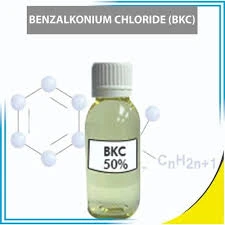Exploring the Properties and Applications of Polyaluminum Chloride Solutions in Water Treatment
Polyaluminum Chloride Solution An Overview and Applications
Polyaluminum chloride (PAC) is a versatile and highly effective coagulant used in water treatment processes. This inorganic polymer coagulant has gained prominence due to its efficiency in removing impurities from water, making it a crucial component in both municipal and industrial water treatment facilities. This article explores the properties, preparation, applications, and benefits of polyaluminum chloride solutions.
Properties of Polyaluminum Chloride
Polyaluminum chloride is an inorganic polymer with a general formula represented as Aln(OH)mCl(3n-m). The compound is a pre-polymerized aluminum salt that includes aluminum ions and hydroxyl ions, giving it favorable characteristics for coagulation and flocculation processes. PAC is typically produced in several forms, which can vary in aluminum content and polymerization degree. The solubility of PAC in water allows it to form a stable solution, which enhances its coagulating properties.
One of the most significant properties of polyaluminum chloride is its low pH, making it suitable for various water conditions. Its enhanced charge neutralization mechanism allows for the effective removal of contaminants, including suspended solids, color, and specific organic materials. Moreover, PAC's ability to create larger aggregates, or flocs, ensures easier sedimentation during the water treatment process.
Preparation of Polyaluminum Chloride Solution
Polyaluminum chloride is typically synthesized by reacting aluminum hydroxide with hydrochloric acid. The process involves the addition of controlled amounts of hydrochloric acid to achieve the desired degree of polymerization and aluminum content. The resulting reaction produces a viscous solution that can be diluted to meet specific concentration requirements for different applications.
The preparation of PAC solutions is usually performed in large-scale industrial settings, where precise control over chemical reactions ensures consistent product quality. Manufacturers often produce PAC solutions with varying aluminum to chlorine ratios, allowing users to select a formulation that best suits their operational needs.
polyaluminum chloride solution

Applications of Polyaluminum Chloride Solution
Polyaluminum chloride solutions are widely employed in water treatment facilities for various applications. One of the primary uses is in the clarification of drinking water, where the PAC acts as a coagulant to remove turbidity, pathogens, and other undesirable particles. By promoting the aggregation of suspended solids into larger flocs, PAC facilitates their efficient removal through sedimentation or filtration.
In addition to potable water treatment, PAC is extensively used in wastewater treatment processes. It plays a significant role in industrial effluent treatment where the removal of contaminants and heavy metals is crucial. PAC's ability to bind with a broad range of pollutants makes it particularly advantageous in treating complex and varied wastewater compositions.
Moreover, polyaluminum chloride solutions find applications in the paper industry, where they enhance the retention of fillers and improve the paper's quality. In the food industry, PAC is utilized as a coagulant in processes such as sugar refining and vegetable oil processing, where clarity and quality of the final products are paramount.
Benefits of Using Polyaluminum Chloride Solution
The use of polyaluminum chloride solutions offers several benefits over traditional coagulants like aluminum sulfate. One major advantage is the lower required dosage of PAC for achieving similar or better coagulation results. This translates to reduced chemical costs and less sludge generation, making PAC an environmentally friendly choice.
Another benefit is its efficacy in various water qualities and pH levels. PAC can work effectively in acidic to slightly alkaline conditions, providing flexibility for operators managing diverse water sources. Additionally, the quick formation of flocs facilitates faster settling rates, enhancing overall operational efficiency in treatment plants.
In conclusion, polyaluminum chloride solution is a vital component in modern water treatment processes, offering effectiveness, flexibility, and environmental advantages. Its wide range of applications—spanning drinking water, wastewater, and industrial processes—demonstrates its crucial role in ensuring clean and safe water for various uses. As global water challenges continue to grow, PAC will remain an essential tool in the quest for efficient and sustainable water management solutions.
-
Pbtc Scale InhibitorPBTC: A Scale Protector for Industrial Water TreatmentNewsAug.05,2025
-
Organic Phosphonate: An Efficient Defender in the Field of Scale InhibitionNewsAug.05,2025
-
Hydrolyzed Polymaleic Anhydride: Green Pioneer in Scale Inhibition FieldNewsAug.05,2025
-
PAPEMP Polyamino Polyether Methylene Phosphonic Acid For SaleNewsAug.05,2025
-
Flocculant Water Treatment: A Pioneer in Purification in the Field of Water TreatmentNewsAug.05,2025
-
Benzyl Isothiazolinone: An Efficient and Broad-Spectrum Antibacterial Protective GuardNewsAug.05,2025





